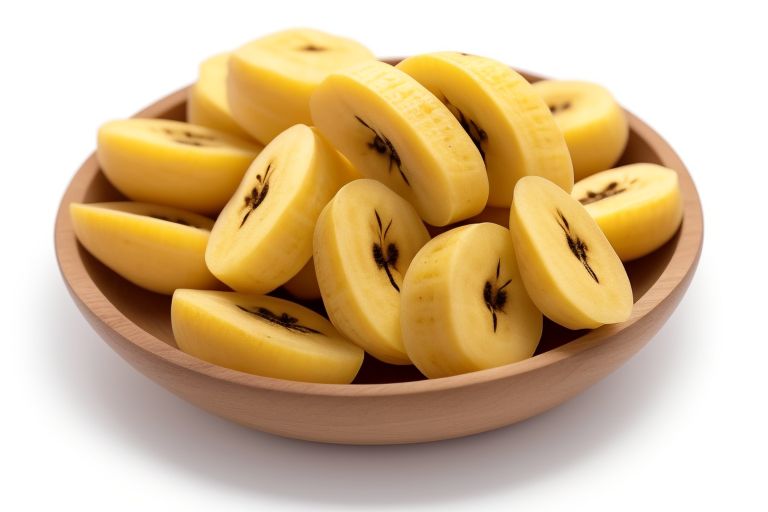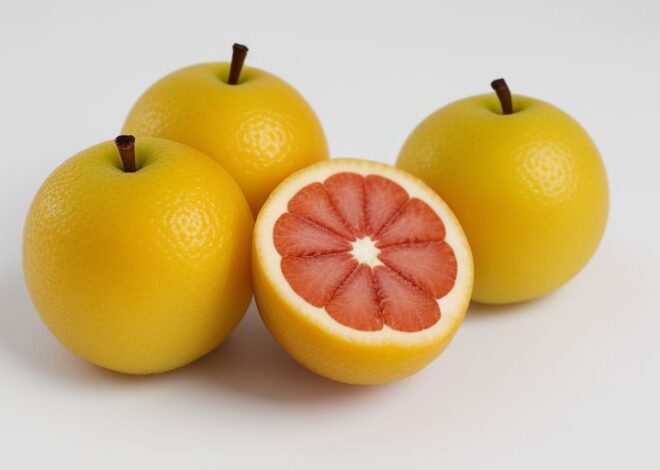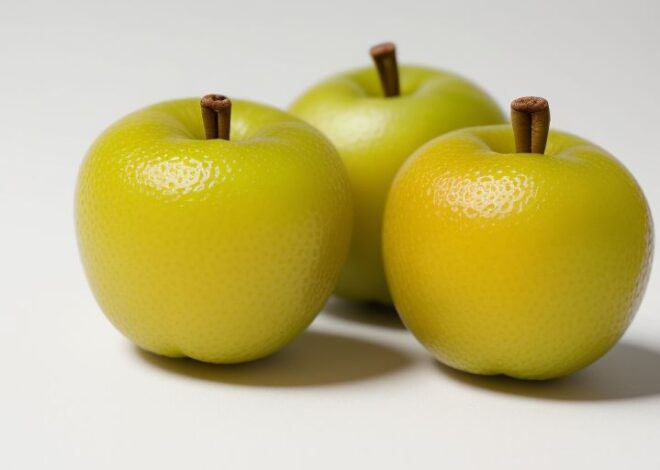
Plantain
Introduction
Plantain (Musa paradisiaca) is a type of fruit that belongs to the genus Musa, which also includes bananas. It is a staple food in many tropical countries and is widely cultivated and consumed around the world. Plantains are larger and starchier than bananas, with a thicker skin that is often green, yellow, or black in color. They are a good source of potassium, vitamins, and minerals, and are used in various dishes, both sweet and savory.
Etymology
The name “plantain” comes from the Spanish word “plátano,” which is derived from the Latin word “platana,” meaning “plane tree.” This refers to the flat, broad leaves of the plantain plant.
Description
Plantains are herbaceous plants that can grow up to 15 feet tall. They have large, oval-shaped leaves that are 2-3 feet long and 1-2 feet wide. The leaves are a deep green color and have a waxy texture. The fruit grows in clusters at the top of the plant, and can be green, yellow, or black in color. It has a thick skin that is often rough and bumpy, and a starchy, sweet pulp inside.
Taxonomy and Cultivars
Plantains are classified as a type of fruit known as a syncarp, which means that it comes from multiple ovaries in a single flower. There are several cultivars of plantains, including:
| Cultivar | Description |
|---|---|
| ‘Dwarf Cavendish’ | A compact, high-yielding variety |
| ‘Gros Michel’ | A popular variety with a sweet, creamy flavor |
| ‘Harton’ | A variety with a reddish-pink skin and sweet pulp |
| ‘Maduro’ | A variety with a yellow skin and sweet, starchy pulp |
Distribution and Habitat
Plantains are native to Southeast Asia and are widely cultivated in tropical countries around the world. They prefer a warm, humid climate with plenty of sunlight and well-drained soil. They are often grown in large plantations, but can also be grown in small gardens and backyard plots.
Cultivation
Plantains are typically propagated using suckers, which are cut from the base of a mature plant. They are planted in well-drained soil and watered regularly. The plants require regular pruning to maintain their shape and promote fruiting. Fertilizers and pesticides may be used to promote healthy growth and prevent pests and diseases.
Production and Uses
Plantains are a staple food in many tropical countries and are used in a variety of dishes. They can be cooked and eaten ripe, or used in savory dishes when green. They are also used to make chips, flour, and other products.
| Use | Description |
|---|---|
| Cooking | Ripe plantains can be boiled, mashed, or fried and used in dishes like mofongo and maduros |
| Baking | Ripe plantains can be used in baked goods like cakes and breads |
| Chips | Thinly sliced green plantains can be fried and seasoned for a crispy snack |
| Flour | Dried and ground plantains can be used as a gluten-free flour substitute |
Phytochemistry
Plantains contain a variety of phytochemicals, including:
| Phytochemical | Description |
|---|---|
| Potassium | An essential mineral that helps maintain healthy blood pressure |
| Vitamins C and B6 | Important for immune function and brain health |
| Fiber | Helps promote digestive health and satiety |
| Antioxidants | Help protect against oxidative stress and inflammation |
Flavor
Plantains have a sweet, starchy flavor when ripe, and a starchy, slightly bitter flavor when green.
Toxicity
Plantains are generally safe to eat, but may cause allergic reactions in some individuals. The sap of the plant can also cause skin irritation in some people.
Nutrition
Plantains are a good source of several important nutrients, including potassium, vitamins, and fiber. They are also low in calories and fat.
| Nutrient | Amount (per 100g) |
|---|---|
| Potassium | 422mg |
| Vitamin C | 10mg |
| Vitamin B6 | 0.5mg |
| Fiber | 2.6g |
| Calories | 105 |
| Fat | 0.2g |
Culture
Plantains have a rich cultural significance in many tropical countries. They are often used in traditional dishes and are a staple food in many households. In some countries, plantains are also used in traditional medicine and have spiritual significance.
“Plantains are a symbol of abundance and prosperity in our culture. They are a reminder of the rich soil and fertile land that our ancestors worked hard to cultivate.” – Maria, a farmer from the Caribbean


